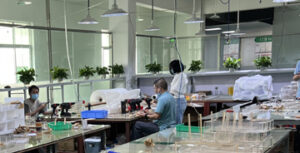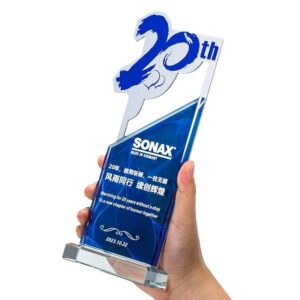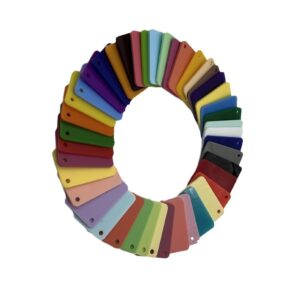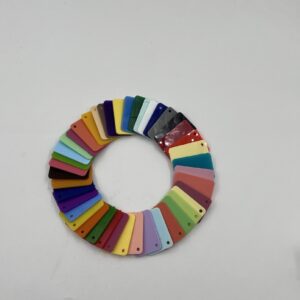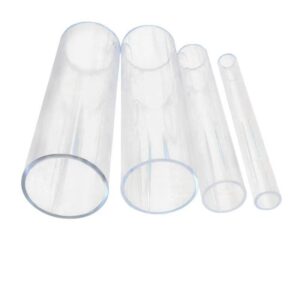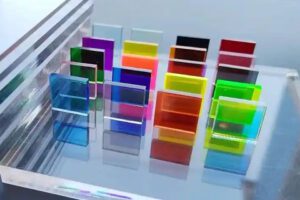Summary
Acrylic display booths have become a prominent choice for businesses looking to enhance their visibility and engagement at trade shows. Known for their sleek and modern aesthetic, acrylic displays provide superior clarity and durability compared to traditional materials like glass, making them ideal for high-traffic environments where product visibility is crucial. These booths not only attract attention but also offer customization options that align with brand identities, allowing for effective storytelling and communication of company values.
The design of acrylic display booths is pivotal in creating memorable trade show experiences. Key design tips include optimizing layout for visitor flow, utilizing vertical space to maximize visibility, and employing strategic lighting to highlight products. By incorporating interactive elements, such as touchscreens or augmented reality, businesses can further engage attendees and foster deeper connections with their products. These strategies can significantly enhance foot traffic and overall attendee engagement, contributing to a booth’s success.
However, the use of acrylic display booths is not without challenges. Vendors must navigate issues such as attracting foot traffic amidst competing booths and ensuring effective product display without overcrowding. Additionally, the quality of staff engagement is critical; well-trained staff can significantly impact the success of a booth by effectively interacting with potential customers. Addressing these considerations is essential for maximizing the potential of acrylic displays and creating an inviting environment that encourages interaction and sales.
In conclusion, acrylic display booths stand out as a powerful tool for businesses at trade shows, combining aesthetic appeal with functional design to drive engagement and enhance brand visibility. By employing thoughtful design strategies and addressing common challenges, companies can create impactful trade show experiences that resonate with attendees and foster lasting impressions.
Table of Contents
Benefits of Acrylic Display Booths
Acrylic display booths offer a multitude of advantages for businesses looking to make an impact at trade shows. Their superior clarity and aesthetic appeal make them a standout choice for enhancing product visibility and engagement with potential clients.
Enhanced Visual Appeal
Acrylic displays possess a sleek, modern appearance that complements any item placed on them. The transparency of acrylic allows for unobstructed views from multiple angles, ensuring that the focus remains solely on the showcased products. This is particularly advantageous in high-traffic environments like trade shows, where visual merchandising is crucial for attracting attention.
Durability and Safety
One of the most significant benefits of acrylic is its resilience compared to traditional materials like glass. Acrylic is less prone to shattering, making it ideal for dynamic settings where interaction with displays is common. This durability ensures that the displays maintain their integrity and appearance even after repeated use. Furthermore, acrylic is resistant to scratches, which helps preserve its clear and polished look over time.
Cost-Effectiveness
Acrylic is often more affordable than glass or metal alternatives, which can lead to substantial savings in shipping and setup costs. This cost-effectiveness allows businesses to allocate resources more efficiently while still achieving an attractive and functional display solution. Retailers can easily incorporate acrylic displays into various environments, such as cafes or boutiques, to highlight featured items and encourage impulse purchases.
Customization and Branding Opportunities
Acrylic displays serve as a versatile canvas for creativity, enabling retailers to customize them with unique designs, colors, and graphics that align with their brand identity. By integrating printed messages or graphics within the displays, businesses can effectively communicate their mission and values to customers, thereby enhancing brand storytelling. This not only adds a personal touch to the display but also transforms it into a powerful marketing tool.
Interactive Product Demonstrations
In today’s market, customers seek engagement and interactivity, and acrylic displays facilitate this need effectively. Brands can utilize these displays for product demonstrations, allowing potential customers to see and interact with the items being showcased. This direct engagement fosters a deeper connection with the product, making it more likely for attendees to make a purchase decision.
Weight Capacity and Versatility
Despite being lightweight, acrylic displays are remarkably sturdy and can support a significant amount of weight. This versatility makes them suitable for showcasing a wide range of items, from delicate jewelry to heavier sculptures. Retailers can group complementary products together in acrylic displays, creating visually appealing arrangements that encourage customers to consider multiple purchases, ultimately boosting sales.
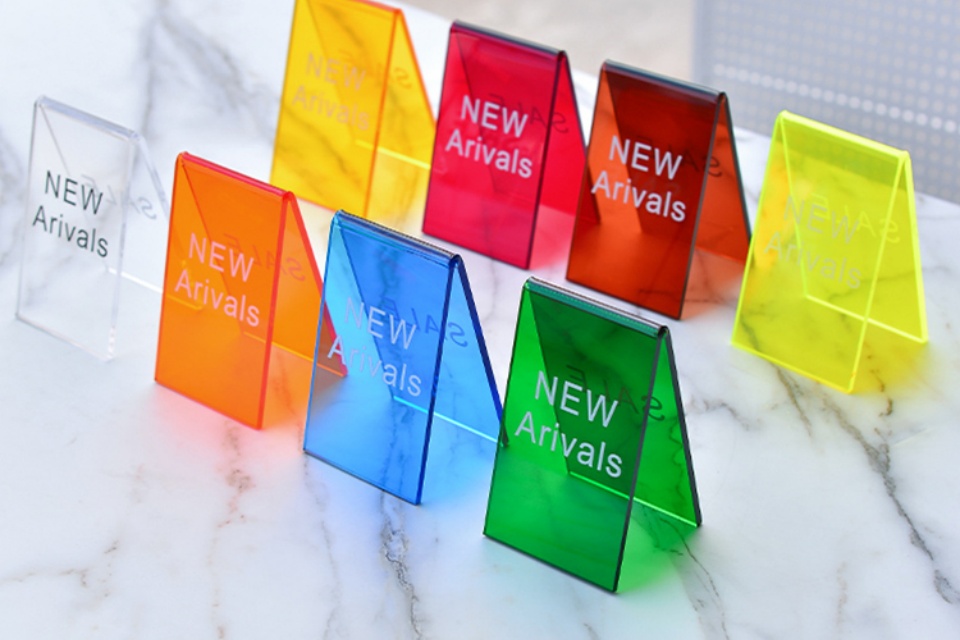
Design Tips for Acrylic Display Booths
Creating Engaging Interactions
To attract attendees, it is essential to design interactive displays using acrylic materials that engage visitors and make the booth more memorable. Clear acrylic panels can be effectively utilized to create eye-catching presentations that draw attention from afar while allowing light to pass through, enhancing the visual appeal of the booth.
Maximizing Space and Layout
Designing an impactful trade show booth involves strategic layout planning to optimize space and enhance visitor flow. Key elements such as product displays, interactive zones, and meeting areas should be positioned thoughtfully to guide attendees through the space seamlessly.
Strategic Layout Planning
Mapping out the booth’s layout with a focus on flow and functionality is crucial. Ensuring clear entry and exit points, along with adequate aisle space, promotes accessibility and encourages visitors to explore the display comfortably.
Vertical Space Utilization
Incorporating tall banners, hanging signs, and shelving units allows exhibitors to draw attention to their booth from a distance. By using the vertical dimension, booths can create an immersive environment that captures interest effectively.
Effective Traffic Flow
Designing for traffic flow and accessibility is vital. Studies show that booths with well-designed layouts experience significantly higher engagement rates compared to congested setups. Ensuring a smooth flow not only enhances visitor experience but also maximizes the potential for meaningful interactions.
Lighting and Color Psychology
Strategic Lighting Implementation
Proper lighting is essential for ensuring visibility while creating mood and directing attention within the booth. Utilizing layered lighting approaches-ambient, task, and accent lighting-can enhance the overall presentation of acrylic displays and draw focus to specific products or messages.
Color Choices and Cultural Considerations
Selecting the right colors for the booth can have a significant impact on visitor engagement. Different colors evoke various emotions, and it is essential to consider cultural implications when designing displays for international trade shows. For instance, green often symbolizes growth, while yellow can evoke feelings of optimism. Research indicates that color combinations can affect visitor retention and engagement, making thoughtful choices critical for success.
Utilizing Negative Space
Incorporating negative space strategically within the booth design enhances message clarity and contributes to a more visually appealing layout. Exhibits that effectively use negative space report higher message retention rates among visitors, making this aspect crucial in creating an inviting atmosphere.
Integration of Multi-Functional Elements
Using modular wall systems and integrated storage solutions can significantly increase the usable space in a booth. This approach not only improves the organization but also allows for flexibility in the booth’s design, accommodating changing trade show needs and maximizing impact.
Engaging Visitors through Interactivity
Creating an engaging trade show booth requires a strategic approach that emphasizes interactivity and visitor participation. Interactive elements enhance visitor engagement and retention, making them a powerful tool in the digital era. To achieve this, it is crucial to design a booth layout that is clear and intuitive, naturally guiding visitors through the space while incorporating elements that capture their attention and encourage longer interactions.
Key Principles of Interactive Booth Design
Incorporation of Interactive Technologies
Integrating technology such as touchscreens, augmented reality (AR), and virtual reality (VR) can significantly elevate the visitor experience. Touchscreens allow attendees to explore content at their own pace, while AR can enable them to visualize products in real-world settings. Additionally, VR offers immersive experiences that evoke genuine emotions, making interactions memorable. These technologies not only attract more visitors but also increase engagement levels and retention power, helping to create lasting impressions.
Application of Psychological Techniques
Utilizing psychological principles can further enhance interactivity. For instance, the social proof effect suggests that people are more likely to engage in activities when they see others doing so. Showcasing customer testimonials at the booth can reinforce credibility and encourage participation. The reciprocity principle can also be leveraged by offering small giveaways or free materials, fostering a sense of obligation among visitors to interact more deeply with the booth. Personalized interactions-where booth staff tailor conversations based on visitor interests boost engagement and conversion rates.
Creating Memorable Experiences
Engaging visitors through interactive activities is essential for creating memorable experiences. This can include games, live product demonstrations, and quizzes. Activities that break up the routine of simply walking through aisles, such as mini-challenges or AR experiences, keep energy levels high and provide visitors with something to remember. For example, implementing activities like VR Pictionary can invite participants to express their creativity, sparking conversations and fostering interaction among attendees.

Case Studies
A diverse range of case studies highlights the effectiveness and versatility of acrylic displays in various contexts, particularly within trade shows and retail environments. These examples illustrate how well-designed acrylic stands can enhance brand visibility and customer engagement.
Success in Retail Environments
One notable case involved a cannabis sampling table designed to facilitate product interaction while preventing theft. The acrylic display case, which was both secure and aesthetically pleasing, allowed customers to engage with the products under the guidance of sales staff. The use of LED lighting not only highlighted the products but also added a premium feel to the display, significantly boosting sales and customer interest in the showcased items.
Trade Show Excellence
Another case study focused on the application of large acrylic display stands in trade show settings. By collaborating closely with clients, manufacturers have successfully created customized exhibits that cater to specific marketing strategies. Over a span of three decades, Classic Exhibits has delivered numerous trade show displays that have received positive reviews for their reliability and quality. These displays often feature branding elements and LED components, which enhance the overall aesthetic and effectiveness of the booth.
Increased Engagement
Data collected from various businesses utilizing acrylic stands reveal a consistent trend: those incorporating well-designed acrylic displays often see a marked increase in sales and customer engagement. For example, companies that implemented unique giveaway items or interactive elements at their booths reported heightened interest and interaction from attendees, reinforcing the value of acrylic displays as a means to elevate the booth experience.
Practical Design Lessons
Through these case studies, several key lessons have emerged regarding the design and implementation of acrylic displays. Ensuring stability and alignment in the assembly process is crucial, as is the use of high-quality materials to achieve a professional finish. Incorporating design theory principles, such as balance and contrast, has proven effective in creating visually stimulating displays that attract attention and drive engagement. These real-world applications of acrylic displays underscore their importance in modern trade show and retail strategies, demonstrating that thoughtful design can lead to significant business benefits.
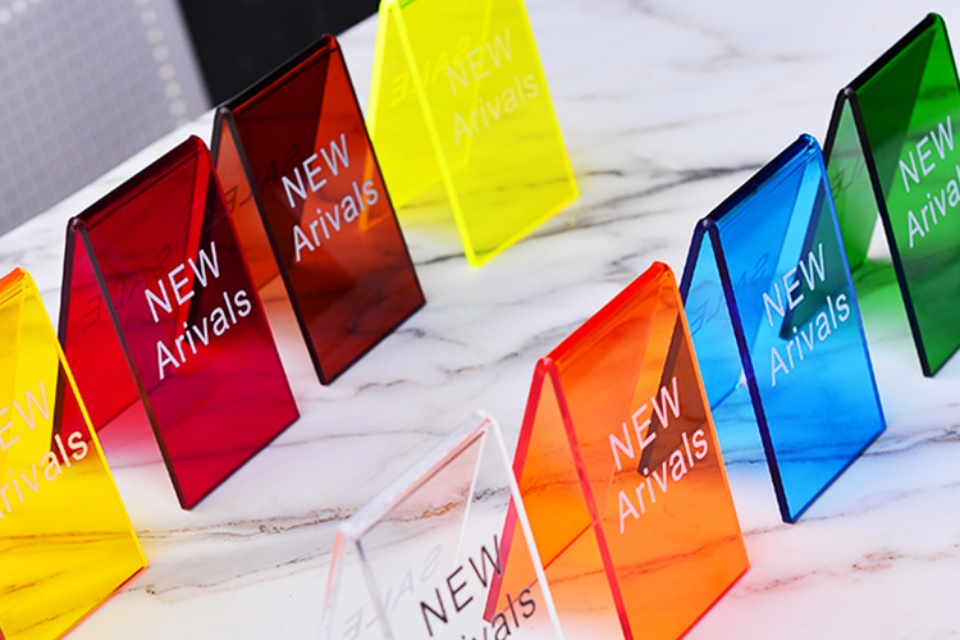
Challenges and Considerations
Designing an effective trade show booth, particularly using acrylic display stands, involves navigating several challenges and considerations to maximize visibility and engagement.
Common Challenges
Attracting Foot Traffic
One of the primary struggles for vendors is capturing the attention of attendees amidst a multitude of competing booths. Eye-catching signage and interactive displays can significantly enhance booth visibility and draw in potential customers. Studies suggest that incorporating interactive elements can increase foot traffic by up to 50%. For instance, companies like Lush Cosmetics have successfully utilized live demonstrations to engage visitors and create memorable experiences.
Effective Product Display
Organizing products in a way that maximizes both visibility and appeal is critical. Vendors must ensure their displays are arranged to avoid overcrowding and facilitate easy navigation. This includes strategically positioning interactive elements and utilizing vertical space through hanging banners or tall displays, which can make the booth more noticeable from a distance.
Staff Engagement
The quality of staff engagement plays a crucial role in the success of a booth. If staff members lack product knowledge or are not proactive in engaging with visitors, it can lead to missed opportunities. Providing thorough training on product details and effective communication strategies before the event can enhance the team’s performance and ensure they are prepared to engage with potential customers effectively.
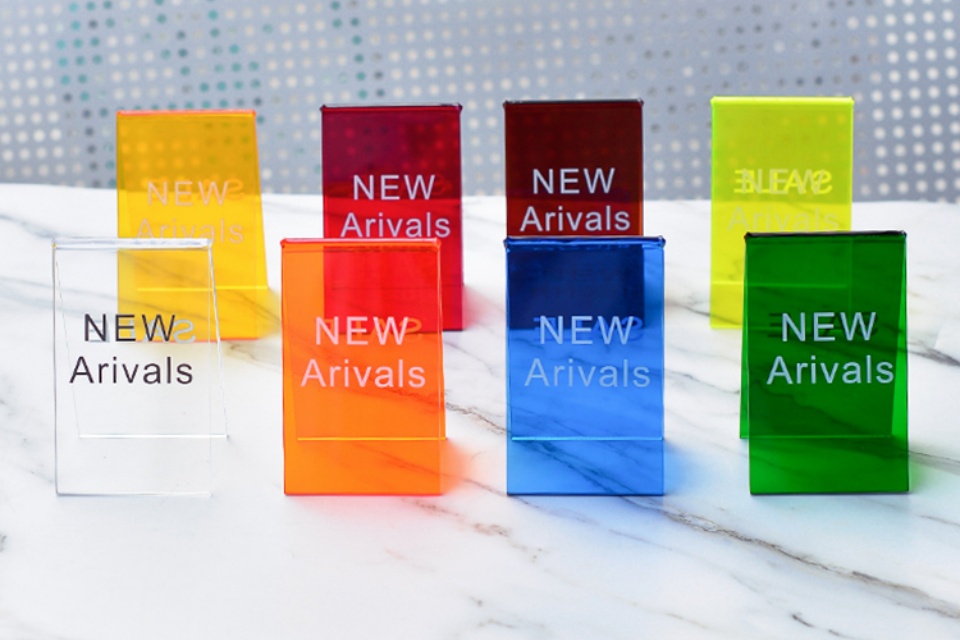
Design Considerations
Lighting and Visibility
Proper lighting is essential for highlighting booth graphics and products. Positioning lights every 2 to 3 feet can ensure adequate illumination of displays, making them more appealing to attendees. Failure to light the booth effectively can result in graphics fading into the background, reducing overall visibility.
Stability and Functionality of Acrylic Stands
While acrylic display stands are favored for their aesthetic appeal and durability, they can present challenges such as stability and visibility. Poorly designed stands may tip over or lack the clear visibility necessary for effective product showcasing. Vendors should prioritize designing stands with a wide base for stability and using clear acrylic to avoid distorting product appearances.
Modular Designs
Incorporating modular components into booth designs allows for adaptability and easy reconfiguration for different events. This flexibility not only keeps the booth looking fresh but also maximizes the investment made in trade show displays. Ensuring that the booth layout facilitates a smooth flow for visitors can enhance the overall attendee experience and engagement.
By addressing these challenges and considerations, vendors can create an inviting and effective trade show booth that stands out and attracts potential clients.


